No salad items in the fridge or on shelves? Think again! There are salads for all seasons.
You’d be forgiven for thinking salads were off the menu with all the talk of supermarket shelves being bereft of tomatoes, cucumber and peppers. But what do we mean by salad anyway? And what are the options for building one around more seasonal and homegrown elements?
A salad is generally described as mix of raw or cooked vegetables, often served cold with a distinct dressing. Even this modest description provides possibilities way beyond the narrow scope of what are generally defined as salad items. Start throwing a little sharp fruit into the mix, some salty capers, olives or cheese as contrast, or even some pulses, grains, nuts or seeds to add a bit of bulk and bite, and you can dust off your salad tongs.
Salad leaves
The first revelation is that salad leaves and lettuce don’t always have to come from abroad or heated tunnels at this time of year. There are plenty of tender leaves that can be grown in un-heated tunnels if you select the right varieties and mix. Baby chard, dandelion, mustard leaf, bitter radicchio and claytonia will all work. Look for UK-grown salad mixes, preferably with an interesting balanced mix of mild, peppery and bitter leaves. They can just be simply thrown into a bowl with a punchy dressing, upon which you build something more extravagant, such as this one with grilled leeks and blue cheese.
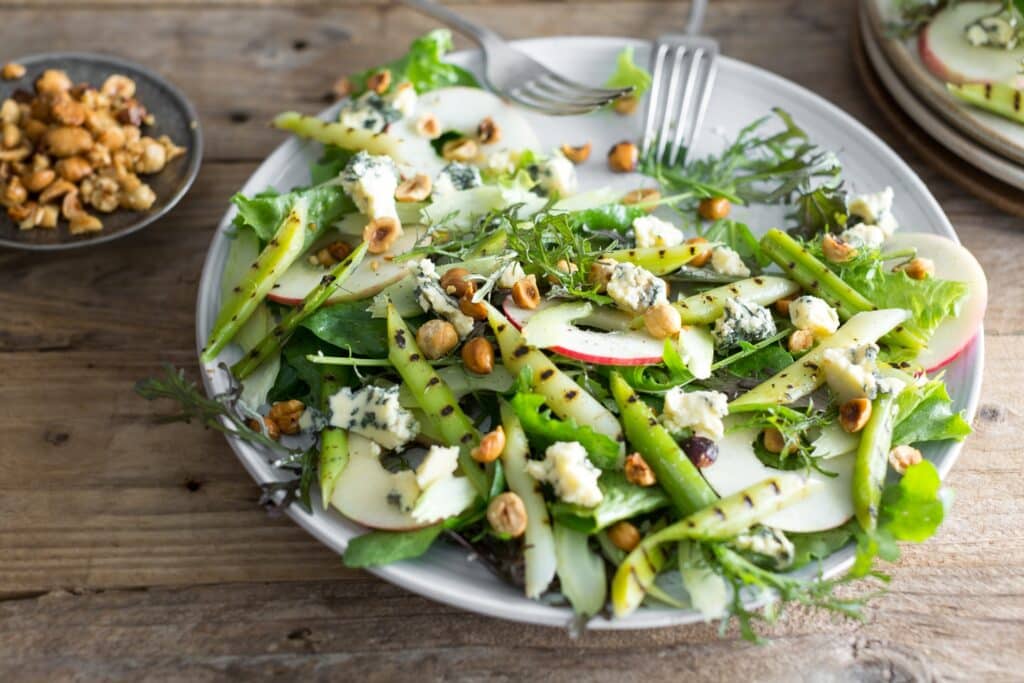
Can’t find any UK-grown salad leaves? Embrace greenery in your own home by growing a few salad leaves on a kitchen windowsill.
Winter greens
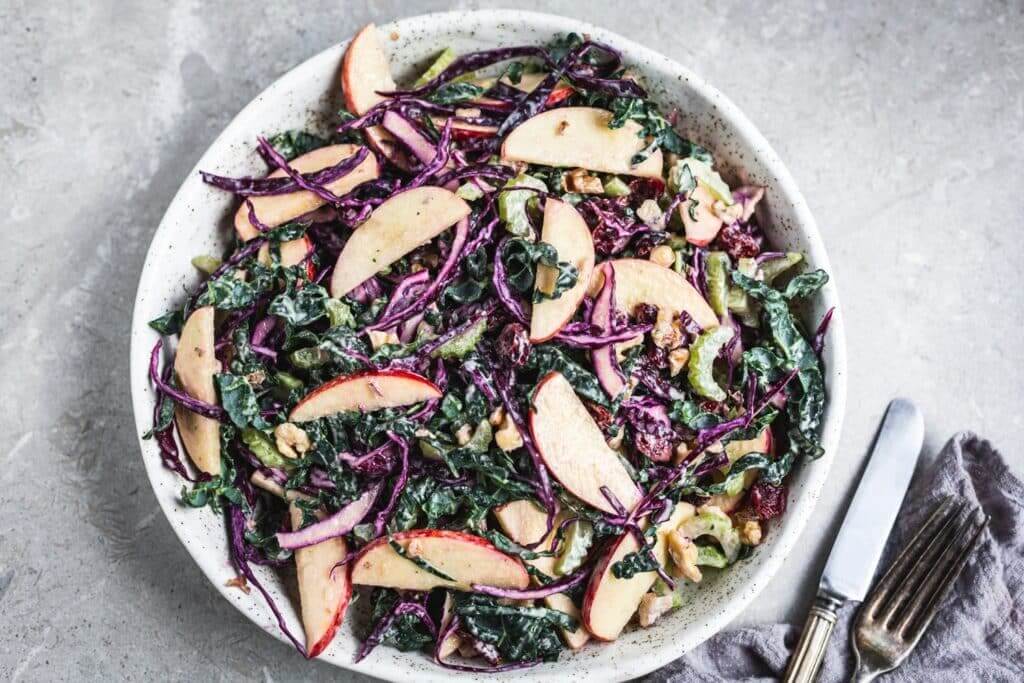
You needn’t always use tender leaves in a salad; more robust winter greens can be used if shredded finely enough. A winter slaw is the obvious choice for raw cabbage. Pair it with more adventurous items than just carrots and onions, and the dressing doesn’t always have to centre around lashings of mayo. You can also substitute cabbage or kale leaves into traditional salad recipes; try some dark Cavolo Nero or red cabbage in a Waldorf salad instead of standard lettuce, or kale in place of the traditional Cos lettuce in a Caesar salad. The leaves benefit from being dressed a little ahead of serving as the salt and vinegar help to tenderise them.
Cauliflower and broccoli
Salad dressings love the nooks and crannies that a floret of cauliflower or spear of purple sprouting broccoli present; it is as if nature has designed the perfect vehicle to trap flavour. They may be a bit too crunchy and sulphurous raw, but a quick roast, a light boil/steam, or a flash across a griddle pan will solve that issue and add depth to the flavour too. Cut the florets into dainty bitesize pieces and trim the spears thinly and they’ll be ready to tumble into the salad bowl.
Roots
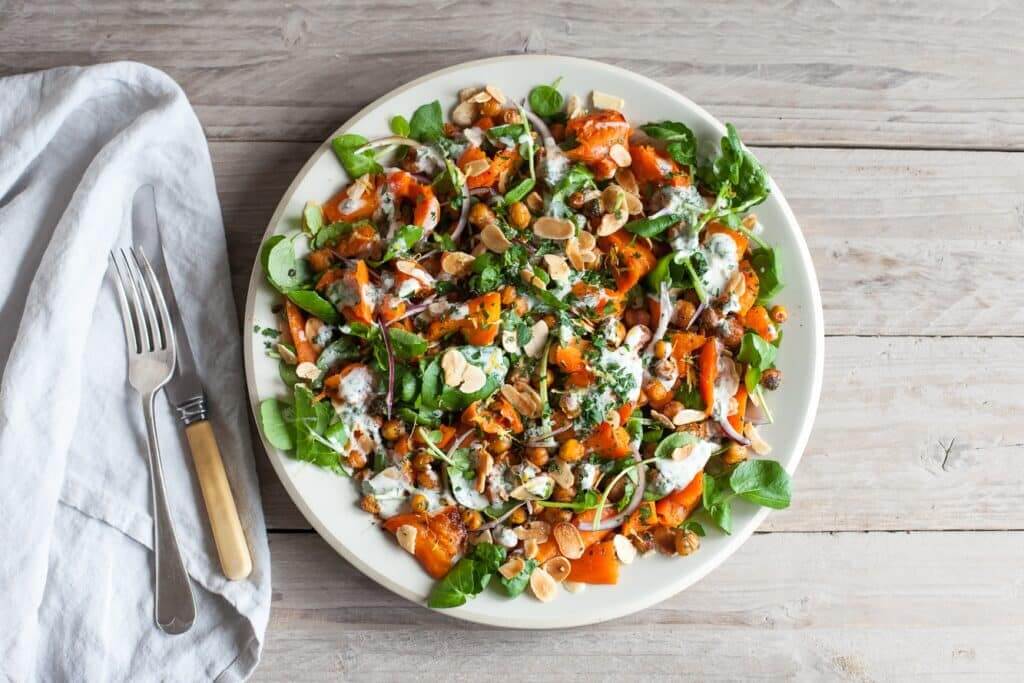
Even the most unlikely and heavy veg can be the star of a salad, it is often just about how you prepare them. Root vegetables are a perfect example. Chopping them into fine matchsticks is ideal if you have the knife skills, alternatively using a veg peeler to pull them into ribbons is speedy and instantly transformative. They’ll become much less daunting and will more easily carry a dressing. You can cook them too, to soften the texture and increase the flavour – earthy wedges of beetroot, fudgy batons of parsnip, and bevelled slices of sweet carrot can all make for colourful and striking components if well balanced with complimentary ingredients.

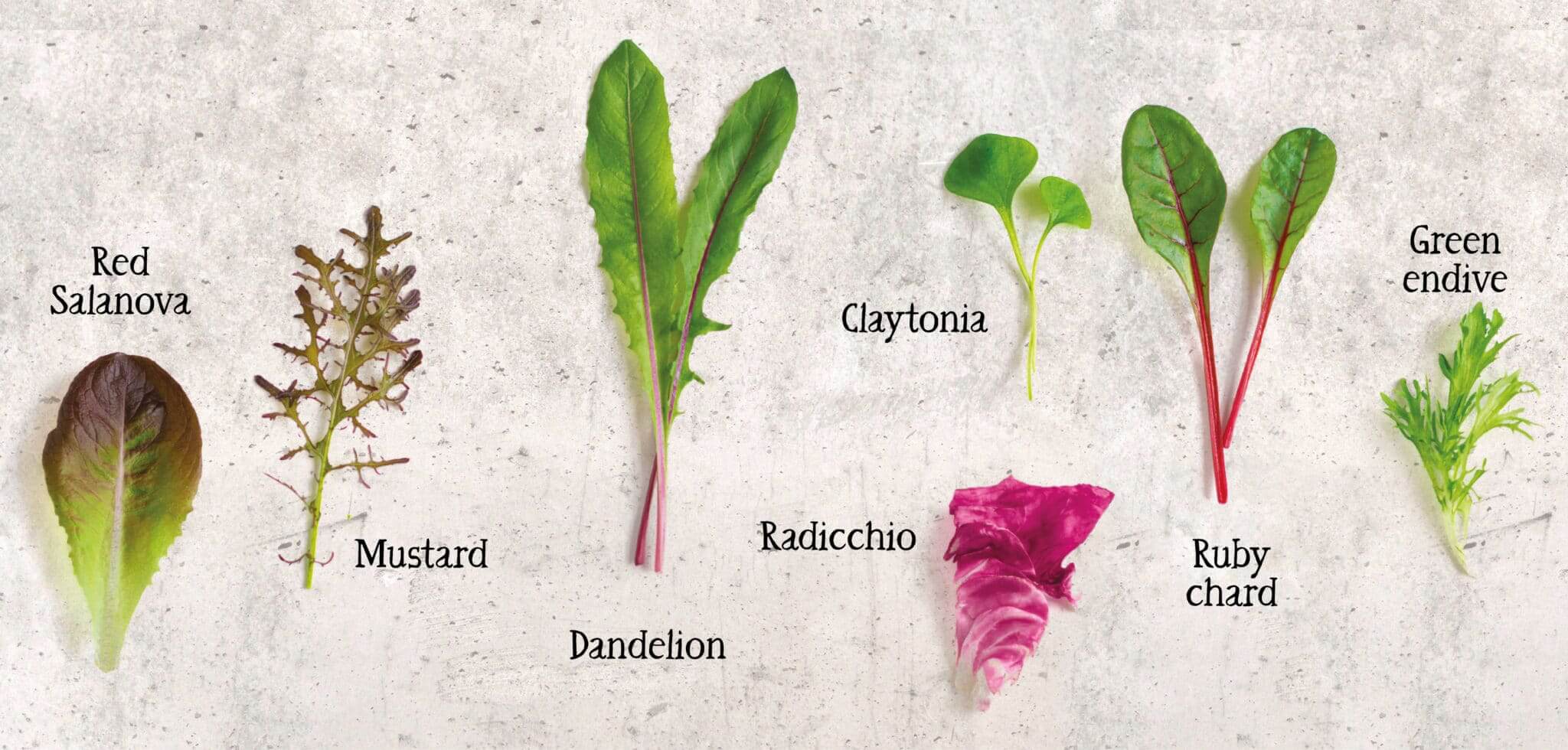
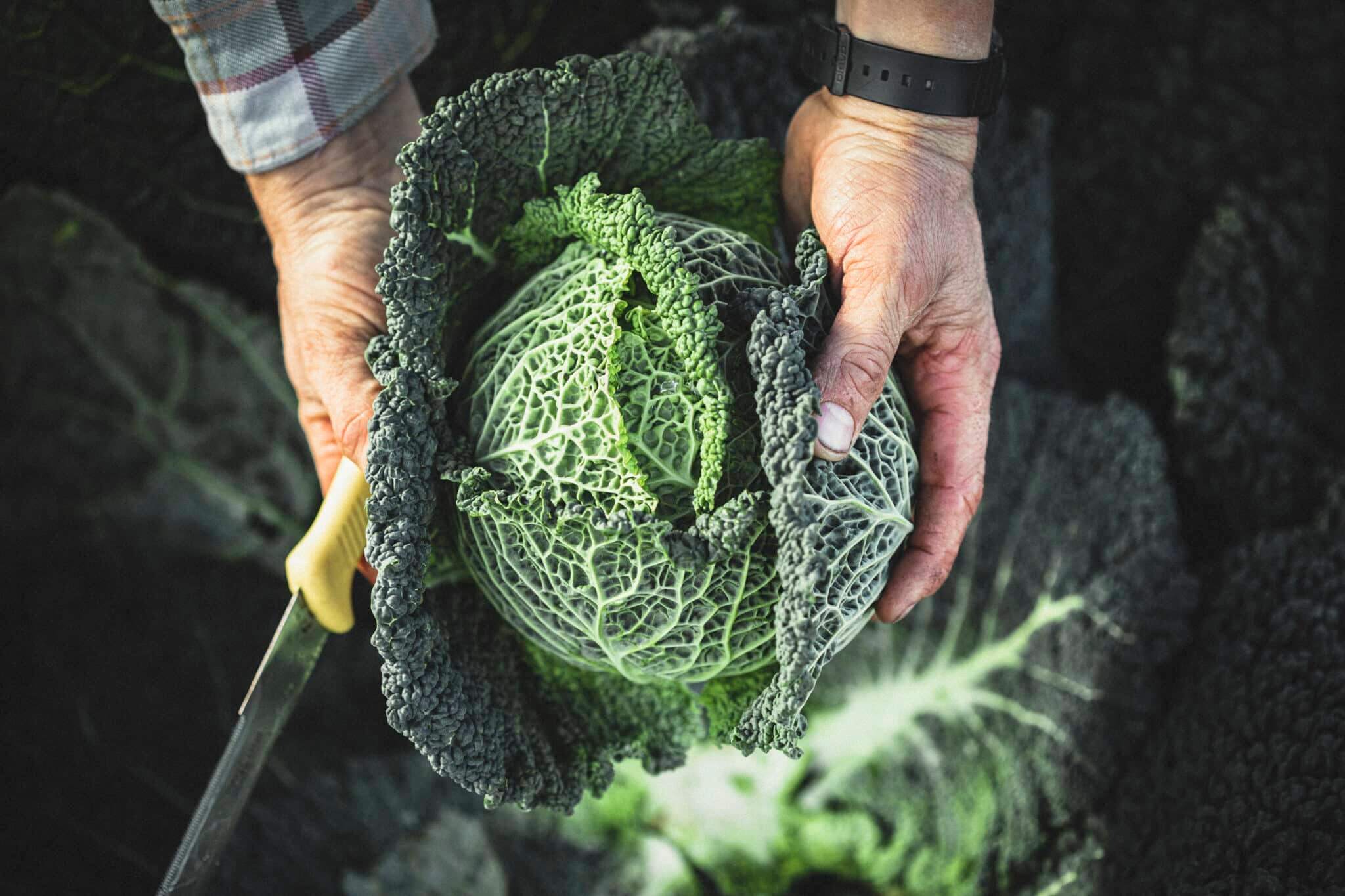

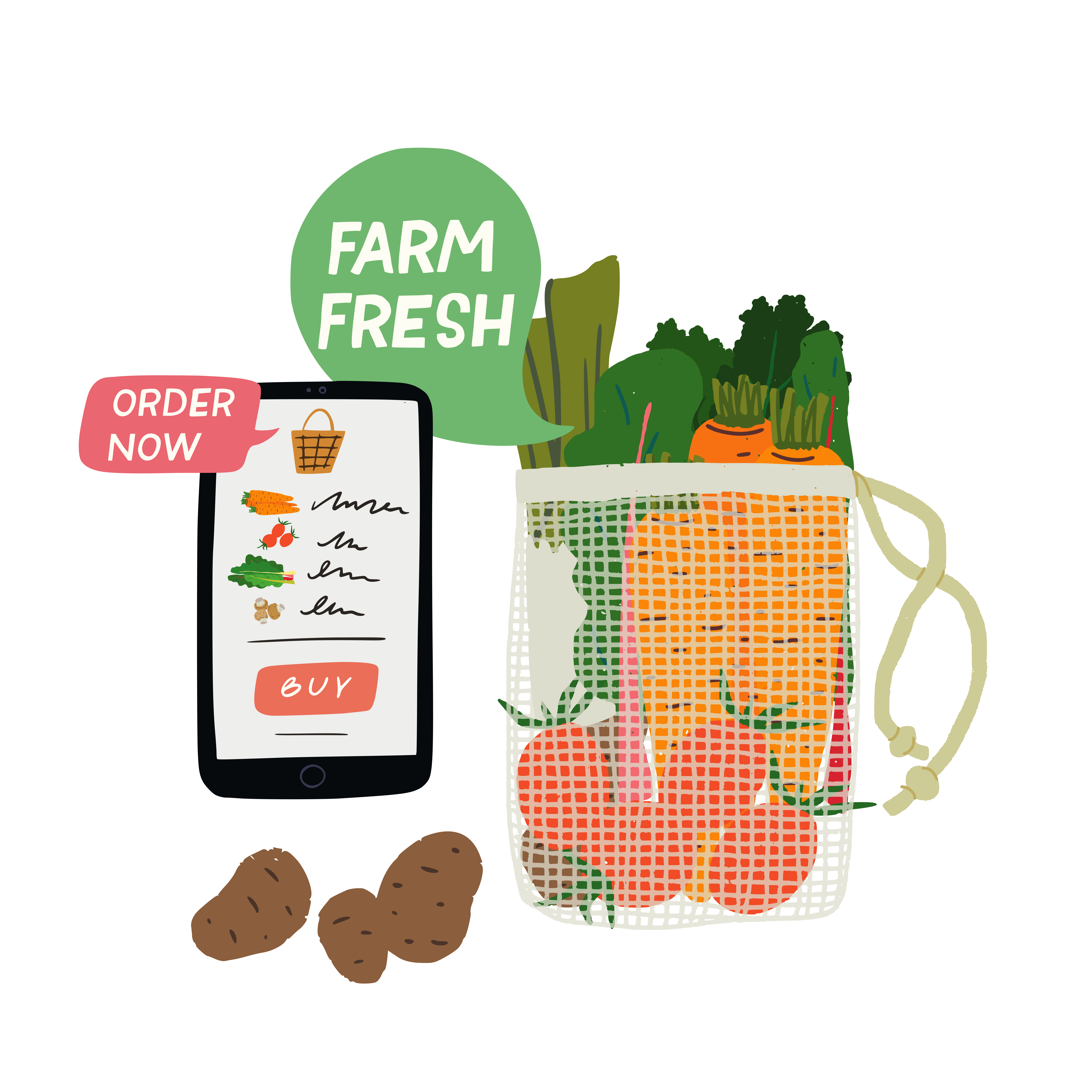




Can Riverford please explain why Radicchio appears in mixed salads but is never sold alone? I used to rely on Riverford as a source but haven’t seen it for ages despite Guy Watson extolling its virtues.